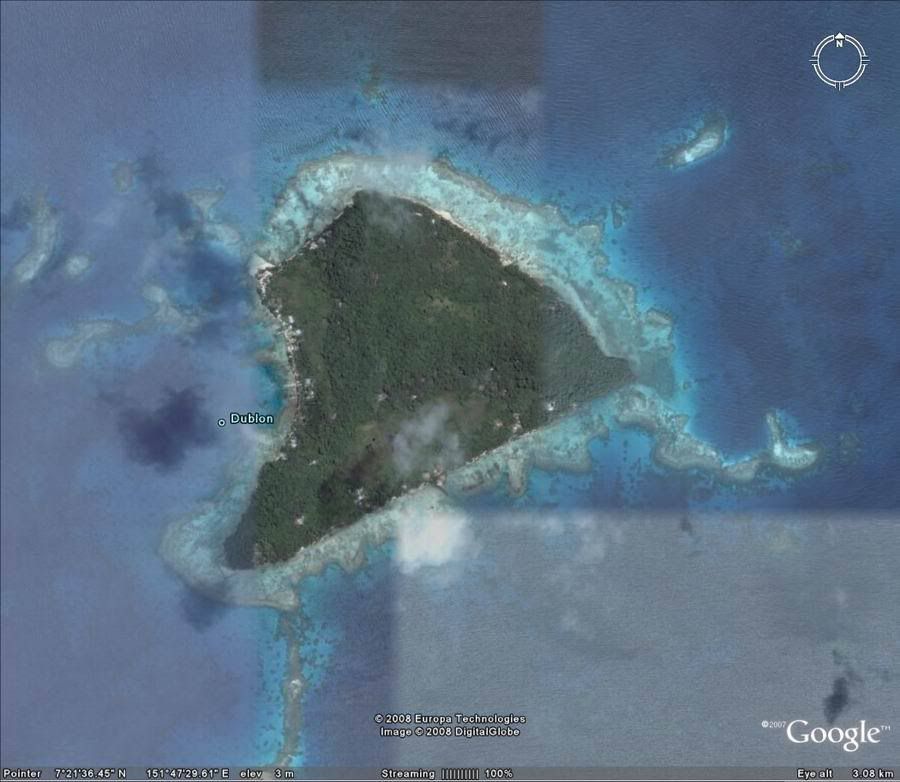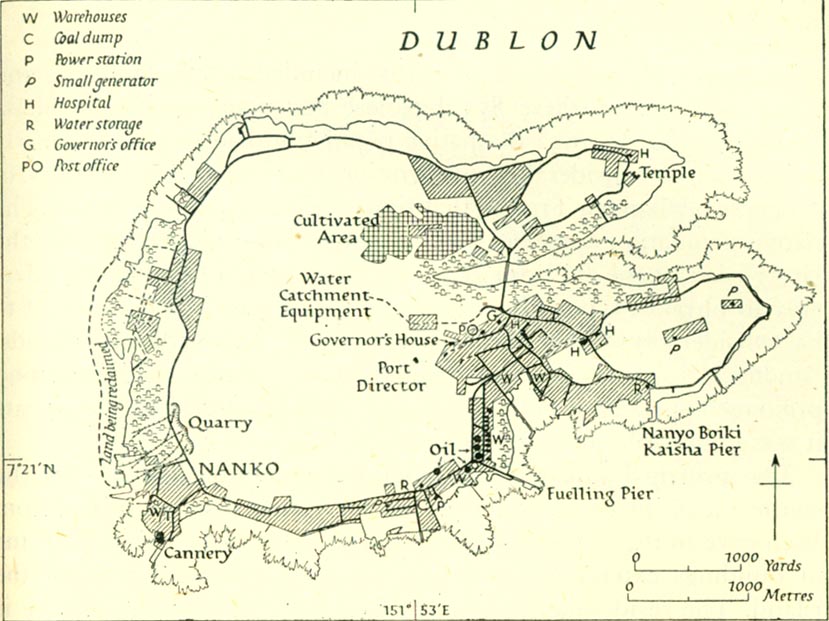Samurai Navy 
Join Date: Mar 2005
Location: Fort Worth, Texas
Posts: 597
Downloads: 0
Uploads: 0
|

Quote:
|
Originally Posted by Carotio
Quote:
|
Originally Posted by aanker
If you have any luck with those corals that would be Outstanding! Off the top of my head I think there were about 8 passages in and out of there.... (not sure)
Art
|
According to Google maps, there are more than 8: |
Looks like there were 4 primary passages utilized by shipping:

Quote:
It seems using Google maps and regarding the info in this thread that Dublon and especially Moen should be given harbour and city facilities:
West-side of Dublon?

|
That is not Dublon Island, but Param. The Japanese placed a hasty airfield here, but not much else. Don't trust Google Map labels.

Quote:
History
Prior to the war, Japan developed the island into a Navy base begining in November 1940, that including a HQ building, eight barracks, five garages, and sick bay. The island was built up as a naval base, supported by a large Japanese community complete with trade stores, restaurants, geisha houses.
Fourth Fleet HQ was built in November 1943 a large central concrete building, three others large and nine smaller buildings. Facilities were manned by the 41st Naval Guard Unit. Forth Fleet Hospital could care for 850 patients in 5 wards and 24 other smaller buildings. 12 Concrete water reservoirs, an ice house, dental clinic, pharmacy, three warehouses and research lab existed. Naval Construction Department included 10,000 men at its peak.
The main radio station of the five in the islands was located at Dublon, where several concrete receivers shelters and buildings were constructed. Forth Harbor Department was located on the southeastern part of the island near Doblon Town. It was 22 wooden buildings including repair shops, warehouses and barracks.
South Seas Development Company had docking facilities on the southwestern tip of the island. Its supply storage and fish cannery were commandeered by the Navy, and it became the Fourth Naval Dockyard. It was the main receiving area for the military. More warehouses and a refrigeration building, HQ, and a two story barracks were constructed. A thousand men worked here on ship repairs, mostly damage sustained to ships from American submarine attacks. The facility also had a 30 ton floating crane and 2,500 ton dry dock. Nearby was a sawmill, and small rail cars connected most of the buildings.
The Truk Transportation department loaded and unloaded supplies from ships. Since there were no docks for the larger ships, supplies needed to be ferried to the bigger ships. Truk's marine infrastructure was second rate, and was capable of properly servicing a modern Naval fleet. A derrick, carts, 40 trucks, barges, harbor craft, tugs and sampans were used for these purposes.
85th Submarine Base
On the western shore was the 85th Submarine base, constructed in May 1942. It serviced, supplied and did minor repairs to subs. Torpedoes were stored in caves and transported by rail car to the shore. Many different repair and barracks existed specific to submarines.
Japanese Army's 52nd "Oak" Division
The Army's 52nd Division arrived in Truk from November 1943 to January 1944. There were not enough buildings for the troops and they were forced to camp in tents, and in civilian houses and schools. These Army troops were cut off from supply after they arrived and had to rely on the Navy for supplies and equipment. They built most of the land based defenses on the islands, most were based on Dublon.
Today
Today, the island is known as Tonoas Island. The jungle has swallowed up the remains of these places. The hospital are easy to locate, as are water and fuel storage tanks, and signposts written in Japanese. Caves and tunnels are rumored to exist in the cliffs filled with supplies, war materials and ammunition. Others contain hidden coastal defenses and AA guns.
|
I don't believe Moen (Weno) was as heavily developed then as it is today. It underwent development by the U.S. after the war. Pacificwrecks.com describes gives the following description:
Quote:
During the war, the Japanese built two airfields Moen 1 and Moen 2, and many supply dumps, stores and other facilities on on the island.
Today
Postwar American forces built concrete structures and restored Japanese houses are along the exist on the southern coast. The island has since been renamed Weno, and it serves as the capital of Chuuk.
Moen 1 (Harushma, Chuuk Airport)
Built by the Japanese and used until the end of the war. Today stll in use.
Moen Seaplane Base
Japanese built seaplane base used until the end of the war. Disused today.
Moen 2 (Airfield No. 2)
Built by the Japanese in February 1944 as a fighter strip. Disused since the war.
Japanese Communications Center
The Xavier High School was used as a Japanese communication center during the war.
|
__________________
-AKD
|